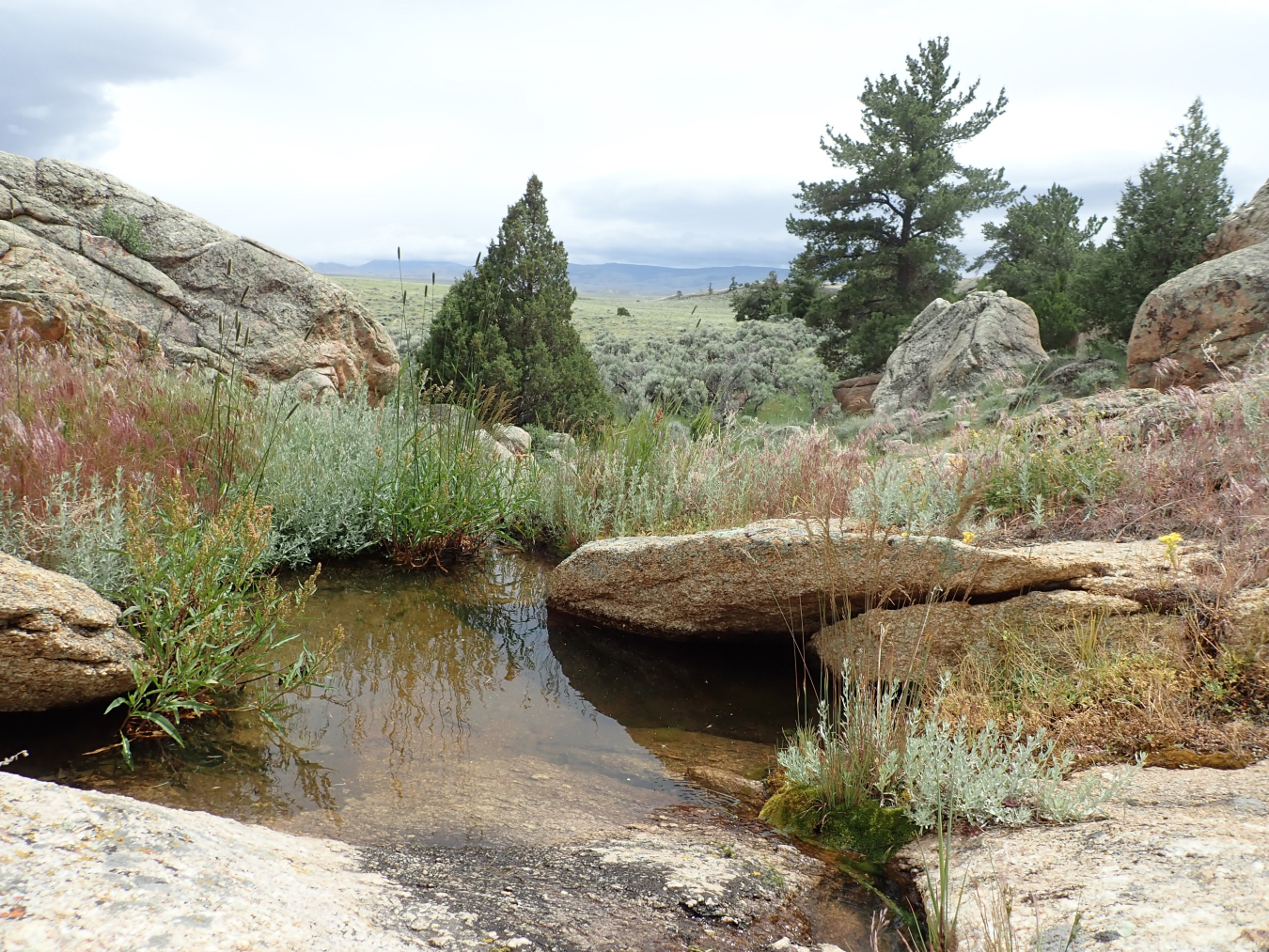Office of Legacy Management ecologists find sensitive plant species at recently transitioned site.
January 23, 2024
Who would have guessed that a threatened plant from the orchid family listed in the Endangered Species Act would be found on disturbed land at the site of a former uranium mill?
The Split Rock, Wyoming, Disposal Site transitioned to LM in fall 2023, and along with it a special plant called Ute Lady’s Tresses (Spiranthes diluvialis). The orchid family plant inhabits early to mid-successional wetlands in several Western states and gets its name from the neat columns of flowers arranged like braided hair. Legacy Management Support Partner ecologists discovered the Ute Lady’s Tresses in one of the seeps where rainwater and snowmelt emerge from cracks and fissures in the granite outcrops.
The Split Rock site is located near Jeffrey City, which was a boomtown between 1956 and 1981, when Western Nuclear Incorporated operated a uranium mill, but today it’s nearly a ghost town. At the former mill site, the demolished buildings and contaminated mill tailings and soil are encapsulated in the 265-acre disposal cell.
The mill was nestled in a circle of tall granite outcroppings, and during decades of mill operations — including remediation, demolition, excavation, and quarrying — the tops of the granite outcrops harbored some unique, unexpected ecology, such as the Ute Lady’s Tresses and other sensitive species such as the limber pine that survived to the present day.


Limber pine woodland, a rare plant community in Wyoming, dominates the granite outcrops at the Split Rock site. The Bureau of Land Management manages and conserves limber pine (Pinus flexilis) as a sensitive species. Although the woodlands experienced some disturbance, they are mostly intact and support a diversity of native shrubs, grasses, and herbaceous plants. The granite outcrops were quarried during remediation activities to supply rock riprap for the disposal cell.
LM Support Partner ecologists discovered that the highly disturbed quarried areas and the cell’s rock-covered channels and ditches still provide a good habitat for limber pine seedlings and saplings to establish. Limber pines can live up to 800 years, but for the woodland to remain healthy, seedlings and saplings are needed. Quarried rock at the Split Rock site unexpectedly provides a way for seedlings and saplings to thrive.
The outer edge of the Split Rock site is ringed with rangeland, and a local ranching family raises cattle and hay, as they have for decades. While LM has a grazing agreement with the family to ensure that their ranching operations can continue within the allowed grazing areas, access to certain areas within the site are restricted. The site’s interior could provide a sanctuary from some of the greatest threats, such as habitat destruction and invasive species, to the endangered orchid family plant and other undiscovered, sensitive species. It is unlikely that LM will need to disturb its habitat on the granite outcrops during long-term surveillance and maintenance activities.

One such invasive species that threatens the Ute Lady’s Tresses is cheatgrass (Bromus tectorum), which has established on parts of the rock outcroppings. LMSP ecologists are considering using host-specific biological control agents in the future to reduce invasive species at the site. A host-specific fungus is under development for cheatgrass and is expected to be available soon. Ecologists have identified several cheatgrass stands that are potential release sites for the fungus, and if it is successfully established, the fungus could help control cheatgrass on the surrounding rangelands as well.
Other known special status species at the Split Rock site include the American white pelican (Pelecanus erythrorhynchos), a Wyoming state-protected bird on the Sweetwater River along the site’s northern border; Beaver Rim phlox (Phlox pungens), a state sensitive plant in the granite outcrops; the golden eagle (Aquila chrysaetos), a U.S. Fish and Wildlife Service bird of conservation concern observed across the site; and the white-tailed prairie dog (Cynomys leucurus), a state sensitive mammal found on the site’s rangelands. Ecologists can never predict where a notable, unexpected bit of ecology might turn up, and the Split Rock site is full of surprises.
At LM’s newest site, the endangered Ute Lady’s Tresses and other sensitive species will continue thriving well into the future thanks to LM’s long-term surveillance and maintenance activities.

